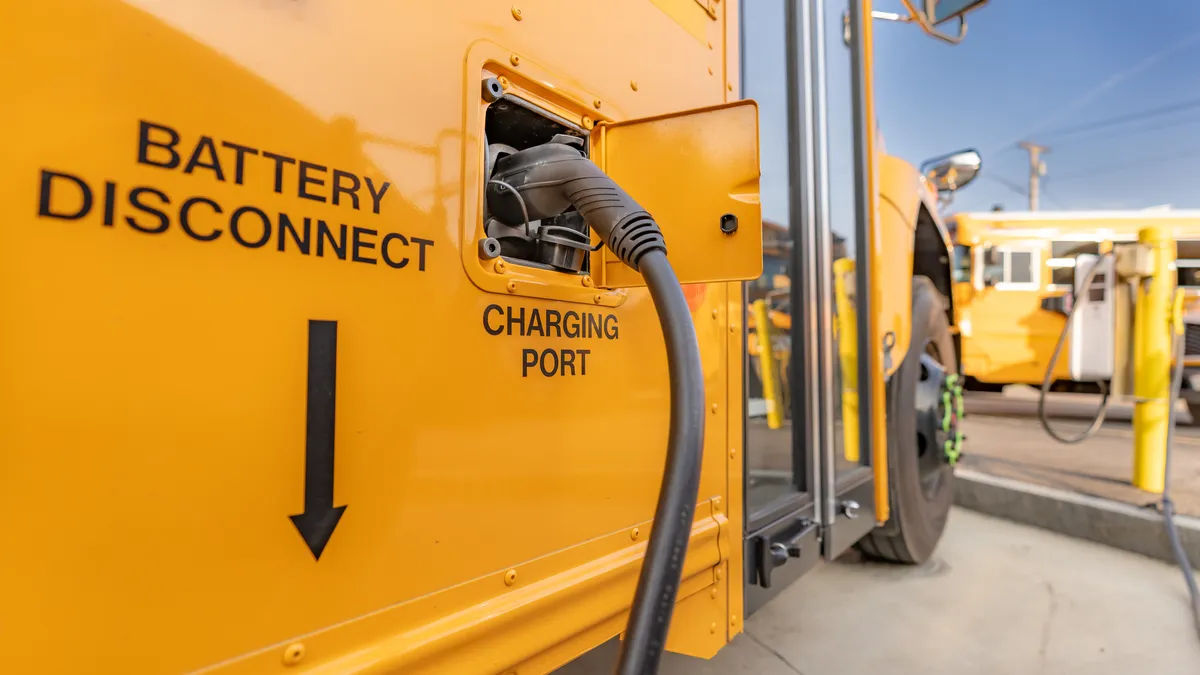Dive Brief:
- The U.S. Environmental Protection Agency’s Office of Inspector General flagged in a recent memo that there is “potential fraud, waste and abuse” in the EPA’s $5 billion Clean School Bus Program, which provides rebates and grants to replace school buses with zero- and low-emission models.
- Some of OIG’s concerns include the EPA’s lack of “robust verification mechanisms” in the application process for rebates and grants from the Clean School Bus Program — allowing third parties to file applications on behalf of “unwitting” school districts. This issue has also led to a lack of transparency from applicants in addition to instances of funds awarded to recipients who are violating program requirements, OIG said.
- OIG’s investigation is not complete, as the 2023 Clean School Bus rebate program is still open for applications. In the meantime, OIG’s recommendations include increasing oversight of third-party vendors, emphasizing legal consequences for fraudulent applications, and requiring applicants to provide supporting documentation.
Dive Insight:
OIG’s suggestions for additional safeguards are welcomed, said Meredith Epstein, manager of federal policy for electric transportation at the World Resources Institute. The nonprofit World Resources Institute is an advocate for the EPA’s Clean School Bus Program. It operates the Electric School Bus Initiative, which aims to ensure every student rides an electric school bus.
“We looked at it more as, ‘Things are going well, and here are safeguards to make sure the program can continue to go well,’” Epstein said.
Additionally, many of OIG’s recommendations have already been instituted by the EPA, such as requiring more documentation for contractors, Epstein said.
The EPA received $5 billion from the 2021 Infrastructure Investment and Jobs Act to allocate over five years — from fiscal years 2022 through 2026 — to fund clean school buses. The OIG report further warned that the “twin failures of no truthfulness attestation and no verification procedures has already placed IIJA funds at risk.”
The House Energy and Commerce Committee held a hearing examining the implementation of the Clean School Bus Program in September. During testimony in the hearing, Sean O’Donnell, EPA’s inspector general, said the EPA had awarded over $902 million to about 400 school districts, and those federal funds provide up to $375,000 per school bus. The EPA needs to implement strong monitoring controls, he said, to make sure those dollars are used for their intended purpose.
“The EPA awards these funds before the school bus has been manufactured and delivered,” O’Donnell said. “Because of this, the Clean School Bus rebate money can sit idle, in a bank account, for up to a year.”
It’s expected that more policymakers will keep an eye on the matter as the OIG investigation wraps up, Epstein said.
Advocates within the growing movement to replace diesel school buses with electric vehicles have pushed for the major infrastructure change as a way to improve the health of students and the environment.
A 2023 study published in the journal Nature Sustainability found that the EPA’s National Clean Diesel Rebate Program, which lasted from 2012 to 2017 and helped upgrade vehicles and expose students to less diesel exhaust, ultimately improved school attendance. In fact, researchers estimate student attendance improved by an additional 350,000 days during that five-year period.
Interest in the Clean School Bus Program has also been booming. In fall 2022, increased demand drove the EPA to nearly double the total funding distributed to districts for rebates that year — raising it from $500 million to $965 million.














